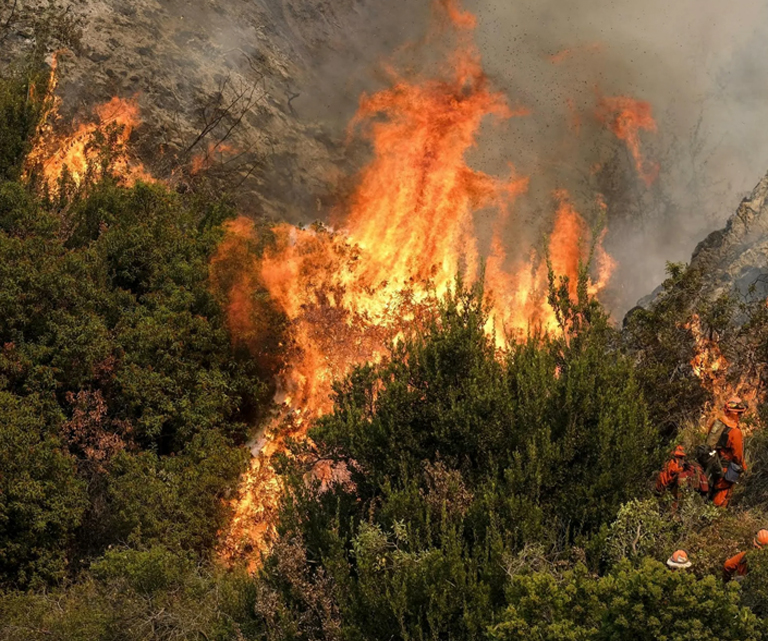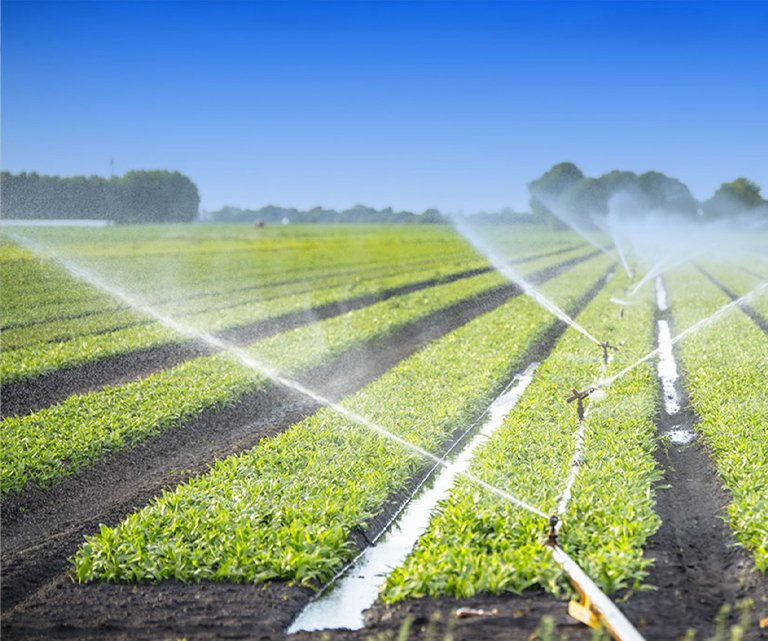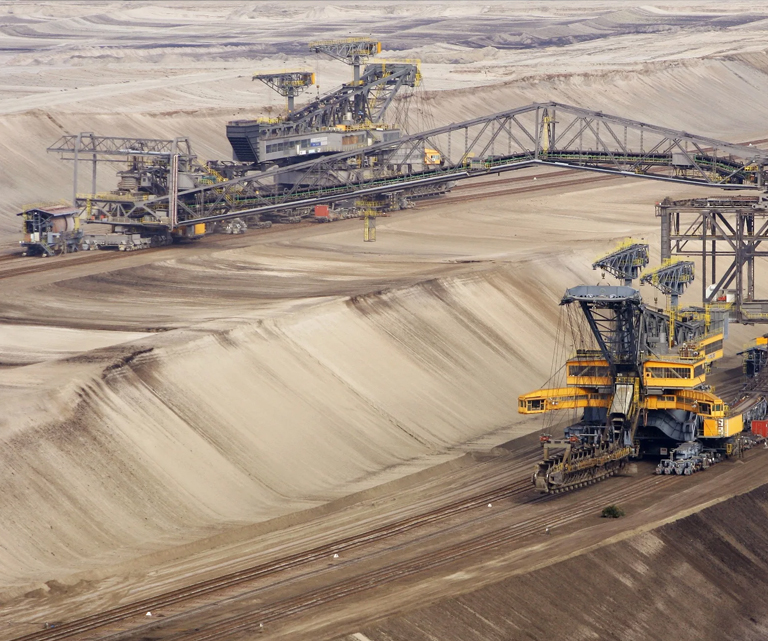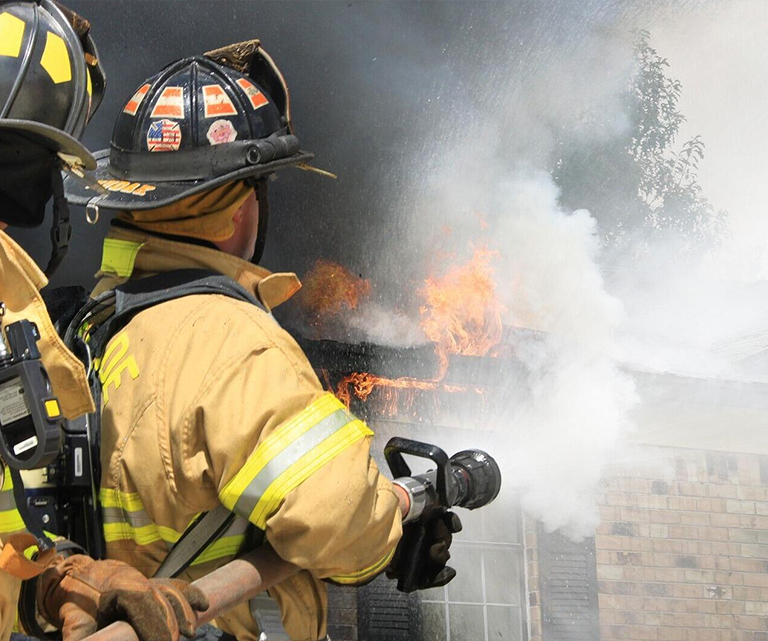Light weight, good elasticity, low resistance to water flow, easy to coil.
Synthetic rubber hoses are durable and versatile. They are heat and cold resistant, remain flexible and strong in extreme temperatures, and can operate reliably in both high and low temperature conditions. The hoses are made of safe, non-toxic materials.

Forestry Fire Protection

Agricultural Fire Protection

Industrial Fire Protection

Municipal Fire Protection
Heat resistance and cold resistance, Environmental Protection, Wear resistant.
| Pressure Required | |||||||
| Caliber | Work Pressure | Burst Pressure | |||||
| (inch/mm) | Bar | MPa | Psi | Bar | MPa | Psi | |
| 1* | 25 | 13-25 | 1.3-2.5 | 190-365 | 39-75 | 3.9-7.5 | 570-1090 |
| 1-1/4" | 32 | 8-25 | 0.8-2.5 | 120-365 | 24-75 | 2.4-7.5 | 350-1090 |
| 1-1/2" | 38 | 8-25 | 0.8-2.5 | 120-365 | 24-75 | 2.4-7.5 | 350-1090 |
| 1-3/4" | 45 | 8-25 | 0.8-2.5 | 120-365 | 24-75 | 2.4-7.5 | 350-1090 |
| 2" | 52 | 8-25 | 0.8-2.5 | 120-365 | 24-75 | 2.4-7.5 | 350-1090 |
| 2-1/2" | 64 | 8-25 | 0.8-2.5 | 120-365 | 24-75 | 2.4-7.5 | 350-1090(CCCF Certification) |
| 2-3/4" | 70 | 8-25 | 0.8-2.5 | 120-365 | 24-75 | 2.4-7.5 | 350-1090 |
| 3" | 75 | 8-25 | 0.8-2.5 | 120-365 | 24-75 | 2.4-7.5 | 350-1090(CCCF Certification) |
| 4" | 102 | 8-16 | 0.8-1.6 | 120-235 | 24-48 | 2.4-4.8 | 350-700 |
| 5" | 127 | 8-13 | 0.8-1.3 | 120-190 | 24-39 | 2.4-3.9 | 350-570 |
| 6" | 152 | 8-13 | 0.8-1.3 | 120-190 | 24-39 | 2.4-3.9 | 350-570 |
1. Understanding EPDM Lining Properties The EPDM rubber lining provides intrinsic resistance to heat, weather, and many chemicals. Its polymer structure determines susceptibility to: Acidic and alkaline solutions Petroleum products such as...
READ MOREI. The Structural Mandate of Fire Hoses The performance of an EPDM Fire Hose relies critically on the structural integrity of its two main components: the inner EPDM rubber liner (providing a smooth waterway and chemical resistance) and the...
READ MOREThe modern **EPDM Fire Hose** is an engineering marvel, designed to handle both the intense thermal stresses of fire suppression and the mechanical demands of deployment in extreme climates. EPDM (Ethylene Propylene Diene Monomer) rubber is...
READ MOREIn the field of modern fluid transportation, the performance of the hose directly affects the safety and efficiency of the operation. Especially in working conditions with complex environments and high operating intensity, the pressure resistance and flexibility of the hose become the core focus. Synthetic Rubber Layflat Hose achieves a perfect balance between flexibility and rigidity with its unique multi-layer structure design, showing the excellent quality of "soft with rigidity, rigidity and flexibility".
The core advantage of Synthetic Rubber Layflat Hose comes from the scientific and precise multi-layer composite structure. Each layer not only undertakes a specific function, but also coordinates with each other to form an efficient overall system.
Inner layer: smooth synthetic rubber lining - guarantee of low friction and high flow rate
The innermost layer is made of specially treated synthetic rubber material with excellent smoothness and corrosion resistance. This lining not only ensures the minimum resistance when the liquid flows and reduces friction loss, but also effectively resists the erosion of various chemical media and prolongs the service life of the hose.
The smooth nature of the inner layer makes the flow rate of the liquid more stable when passing through, reducing the risk of fouling and clogging. More importantly, this layer maintains a flexible foundation, allowing the hose to bend flexibly according to the environment and operational requirements.
Middle layer: high-strength fiber braided layer or spiral reinforcement layer - a strong compression skeleton
The middle layer is the key part of the multi-layer structure that gives the hose mechanical strength. High-strength fiber fabrics or spirally arranged reinforcement materials are used to form a strong "skeleton", which greatly improves the hose's pressure resistance and deformation resistance.
This layer of structure can withstand the high-pressure impact caused by the external environment and internal fluid, preventing the hose from expanding, deforming or rupturing under high-pressure conditions. At the same time, the elasticity and toughness of the fiber give the hose the necessary flexibility, making it both strong and flexible.
Outer layer: Weather-resistant rubber coating - UV-resistant and wear-resistant protective shield
The outermost layer is covered with a specially designed synthetic rubber, which is both weather-resistant and wear-resistant. It effectively resists the erosion of external factors such as ultraviolet radiation, ozone corrosion, and mechanical friction, ensuring that the hose maintains good performance for a long time.
This layer of rubber not only improves the overall anti-aging ability of the hose, but also provides a comfortable feel for the operation of the hose and enhances the convenience of grip. At the same time, this layer of coating can effectively prevent the outer surface of the hose from being damaged, further ensuring the safety of the internal structure.
The three-layer design of the Synthetic Rubber Layflat Hose does not operate in isolation, but interacts with each other during use to form a whole that is both soft and strong.
The multi-layer structure allows the hose to be easily coiled and laid without excessive force. The combination of the soft synthetic rubber in the inner layer and the elastic fiber in the middle layer enables the hose to withstand repeated bending without fatigue cracks. The outer layer of wear-resistant rubber ensures that the surface of the pipe body is not scratched during movement and laying, extending the life of the hose.
When the hose is under working pressure, the fiber reinforcement layer in the structure provides strong mechanical support to prevent the pipe wall from expanding or flattening. The inner rubber layer can adapt to internal pressure and temperature changes due to its thermal stability and elastic properties, automatically adjust the molecular arrangement, and avoid material fatigue and performance degradation.
This design ensures that the hose maintains a stable pipeline shape and fluid delivery capacity during long-term high-intensity operations, thereby improving the overall safety of the system.
When facing high temperature and high pressure environments, the Synthetic Rubber Layflat Hose shows good dynamic coordination between the structural layers. The fiber reinforcement layer prevents excessive deformation, and the rubber layer adjusts the molecular state through its own thermal elasticity to ensure that the overall hose will not lose its flexibility due to thermal expansion and contraction.
This not only improves the durability of the hose, but also reduces the risk of downtime and maintenance costs caused by hose damage.
The multi-layer design of the Synthetic Rubber Layflat Hose is not only reflected in the coordination of flexibility and strength, but also brings the following significant performance advantages:
Improved durability: The multi-layer structure effectively disperses stress, reduces the risk of damage to a single layer, and extends the service life of the hose.
Safety guarantee: The strong pressure-resistant skeleton layer reduces the risk of bursting and ensures the safety of operators and equipment.
Easy maintenance: After the optimization of each layer structure, the hose is not easy to age or deform, which reduces the frequency and difficulty of maintenance.
Strong adaptability: The composite structure allows the hose to be applied to a variety of working conditions, realizing a wider range of application possibilities.
With the upgrading of industrial demand and the advancement of material technology, the multi-layer structure design of Synthetic Rubber Layflat Hose will continue to deepen and evolve. Future design trends include:
Functional layer segmentation: Add anti-static, antibacterial and other functional layers on the existing basis to meet more professional needs.
Smart material application: Introduce smart rubber materials such as temperature sensing and self-repairing to improve the hose's adaptive ability and life.
Lightweight design: Reduce the weight of the pipe body through material innovation, improve operation convenience, and reduce transportation and installation costs.
Environmental protection and energy saving: Use more environmentally friendly materials and processes to reduce environmental impact during production and use.
These development directions will further strengthen the structural advantages of Synthetic Rubber Layflat Hose, which is "soft with hardness, hard and soft", and provide users with more efficient, safer and more environmentally friendly fluid delivery solutions.
Taizhou Jun'an Fire Technology Co., Ltd. has modern and advanced production equipment and professional management personnel, and has gathered a group of senior technical and professional designers in this field to design and manufacture rubber/PVC/PU lined fire hoses.Synthetic Rubber Layflat Hose, with its scientific and reasonable multi-layer composite structure, perfectly combines the performance characteristics of flexibility and rigidity. This design concept of "soft with rigidity, rigidity and flexibility" not only makes the hose more flexible in operation, but also ensures its stability and safety under complex working conditions.
With the continuous breakthrough of technology, this structural design will continue to be optimized to help more industries improve the overall efficiency and reliability of fluid transportation. For users with high standards for flexibility and strength, Synthetic Rubber Layflat Hose is undoubtedly an ideal choice.